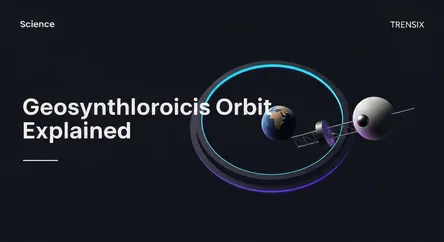Science
Geosynchronous Orbit Explained

Discover geosynchronous orbit (GSO), the high Earth orbit that allows satellites to match Earth's rotation, enabling modern communication.
What is it?
A geosynchronous orbit (GSO) is a high Earth orbit with an orbital period that matches Earth's rotation period: one sidereal day (about 23 hours, 56 minutes, and 4 seconds). A satellite in this orbit, at an altitude of approximately 35,786 kilometers (22,236 miles), appears to return to the same position in the sky at the same time each day. A special case of this is the geostationary orbit (GEO), which is a circular geosynchronous orbit directly above the Earth's equator. From the ground, a geostationary satellite appears motionless, fixed at one point in the sky.
Why is it trending?
The concept of geosynchronous orbits is constantly relevant due to the world's increasing reliance on satellite technology. The expansion of global communication networks, satellite internet services, and GPS navigation keeps orbital mechanics in the public eye. Furthermore, discussions about the growing population of satellites, the allocation of orbital slots, and the management of space debris make GSO a critical topic in international space policy and technology news.
How does it affect people?
Geosynchronous orbits are fundamental to modern life. They enable many services we use daily, including satellite television, weather forecasting, and reliable communication for remote areas. Satellites in GSO provide continuous coverage over a large geographical area, making them ideal for broadcasting signals and relaying data across continents. This technology underpins everything from live international news coverage and disaster response communications to the weather patterns you see on your local forecast.